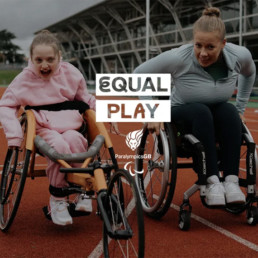Developing a PSHE Curriculum on Antisemitism, based on the teaching of Rabbi Lord Jonathan Sacks

Written by Rabbi Cobi Ebrahimoff
Rabbi Cobi Ebrahimoff is UK Director of Education at The Rabbi Sacks Legacy, where his primary focus is to bring the teachings of Rabbi Sacks into schools and spearhead the development of innovative educational resources.
INTRODUCTION
Within living memory of the Holocaust, after which the world vowed “never again,” antisemitism has returned.
Rabbi Lord Jonathan Sacks offers a unique approach for students to understand why antisemitism is a danger for every single member of British society. In this four part series of lessons, students will explore:
- What is antisemitism?
- The stereotypes, prejudice and discrimination that Jewish people face
- The evolution of antisemitism and how it affects Jewish people today
- How antisemitism may affect them and how to combat it
BACKGROUND TO ANTISEMITSIM
Antisemitism is complex and often contradictory, making it difficult to define. Historically, Jews were persecuted for opposing reasons – being both poor and rich, communists and capitalists, isolated and too integrated.
So, what is antisemitism? It’s not just disliking someone for being different – that’s xenophobia. And it’s not simply criticising Israel – that’s part of democratic debate. Antisemitism is far more dangerous. It’s about persecuting Jews and denying them the right to exist as Jews, with the same rights as everyone else.
Over time, antisemitism has evolved, shifting from religious persecution in the Middle Ages to racial hatred in the 19th and 20th centuries, and now, targeting Israel’s right to exist. This new antisemitism uses human rights as a guise for prejudice.
Why should this matter to all of us? Antisemitism reflects a broader inability to accept difference. History shows that hate starting with Jews never ends with Jews. It’s a warning sign of threats to freedom, humanity, and the dignity of difference – issues that concern us all. That’s why combating antisemitism is a fight we must undertake together.
The Rabbi Sacks Legacy (RSL) is proud to present a new PSHE curriculum designed to provide a comprehensive framework for educating students about the historical and contemporary aspects of antisemitism through the prism of Rabbi Sacks’ unique approach. The curriculum aims to enrich students’ understanding of moral responsibility and create a deep appreciation of social diversity.
The curriculum meets Ofsted’s requirements to promote SMSC (Spiritual, moral, social, and cultural) development and fundamental British values. Under Section 5 inspections, Ofsted will consider how British values are promoted within schools, including the importance of tackling dis- crimination. Education on antisemitism directly supports these objectives, demonstrating the school’s commitment to creating a safe and inclusive environment for all students.
COMPREHENSIVE, READY-TO-USE RESOURCES FOR TEACHERS
Designed for teachers by teachers, the RSL PSHE curriculum comes complete with all the resources needed for seamless implementation. Teachers are provided with:
- Fully developed lesson plans with clear learning objectives aligned with SMSC and Departmental requirements.
- Differentiated activities to challenge higher-ability students and support those who need additional help, ensuring inclusivity in every classroom.
- Interactive multimedia content to engage students and bring complex topics to life.
- Assessment for learning tools to measure student progress and reinforce key challenges and benefits of living in a diverse society.
- Detailed teacher not and PowerPoint presentations, making it easy to deliver high-quality lessons with confidence.
To support high-quality delivery, teachers have access to high-quality training sessions and the opportunity to book expert-led workshops, ensuring that the curriculum is not only implemented effectively but also becomes an integral part of the school’s ethos.
ELEVATE YOUR SCHOOL’S COMMITMENT TO FUNDAMENTAL BRITISH VALUES WITH THE RSL PSHE CURRICULUM
In today’s educational landscape, the responsibility of promoting fundamental British values within schools has never been more significant. The Department for Education mandates that all schools actively promote values such as democracy, the rule of law, individual liberty, mutual respect, and tolerance of those with different faiths and beliefs. These values are integral to students’ spiritual, moral, social, and cultural (SMSC) development, forming the foundation of a cohesive and inclusive society.
The RSL PSHE curriculum empowers schools to fulfil these essential requirements. Developed with the insights of Rabbi Sacks, a leading voice in fostering interfaith dialogue and understanding, this curriculum is designed to address the challenges of antisemitism while broadening students’ understanding of diversity and respect for all.
CURRICULUM ALIGNMENT WITH SMSC DEVELOPMENT AND FUNDAMENTAL BRITISH VALUES
Promoting Mutual Respect and Tolerance
At the core of the curriculum is the “dignity of difference” principle, a concept championed by Rabbi Sacks. Through this lens, students are encouraged to explore and appreciate the benefits of our diverse society. The curriculum challenges students to confront prejudice, including antisemitism, and embrace differences with dignity.
Fostering Individual Liberty
The curriculum empowers students to think critically about the world around them, promoting individual liberty by encouraging them to form opinions.
Reinforcing the values of Democracy and the Rule of Law
The curriculum highlights the importance of the rule of law in protecting individual rights and minorities. It also promotes democratic values by encouraging discussions and debates, respecting different viewpoints, and understanding the processes that uphold democracy.
Enhancing SMSC Development
Through carefully structured sessions with clear learning objectives, differentiated tasks, and comprehensive assessment opportunities, students are guided to reflect on their moral responsibilities, develop social awareness, and cultivate a deep understanding of cultural diversity.
COMMIT TO EXCELLENCE IN EDUCATION
The RSL PSHE curriculum is more than just a teaching tool. It’s a commitment to fostering a school environment where every student learns the value of respect, tolerance, and moral responsibility. By integrating this curriculum into your school’s PSHE sessions, you are meeting Ofsted’s requirements and playing a vital role in shaping a generation that values diversity and upholds the principles of a just and inclusive society.
Build bridges. Break barriers. Adopt the RSL PSHE curriculum today!
How to Drop-in LGBT+ References Across the Curriculum

Written by Mel Lane
Mel Lane (she/her) is Head of Education at Pop’n’Olly. She has been a primary school teacher and teacher trainer for nearly 30 years and worked in schools on LGBT+ inclusion policies with thousands of children and school staff. Mel is a co- author of What Does LGBT+ Mean? (Pop’n’Olly, 2021).
When I first started trying to be LGBT+ inclusive in my lessons I was really concerned that it might prompt a lot of off-topic and probably negative comments from the children in my Year 6 class. We were learning about possessive apostrophes and I tentatively put the following on the board as a warm-up discussion:
Where should we put the apostrophe?
- The girls cloakroom
- The childrens playground
- Davids boyfriend
I stepped back and held my breath, waiting for the silly comments, the sniggers and the inevitable disruption and NOTHING HAPPENED! I literally couldn’t believe it.
At that stage, I was very new to inclusion work. We had nothing inclusive stuck up in the classroom, There’d been no inclusive assemblies and we’d just briefly touched on inclusion in one PSHE lesson. Surely, they’d never handle this, I thought. How wrong I was. The class quietly got on with the work and we discussed exactly where the apostrophes should go and why we’d put them there.
I think growing up and starting my career under Section 28 (the law that silenced discussion around LGBT+ issues in school) had given me such a strong sense that I ‘shouldn’t’ be talking about these issues in school. The children (aren’t children awesome!) showed me otherwise. They showed me that just dropping in references to LGBT+ lives and showing they’re just another way to be a human, was more than fine for them.
Now, I’m a huge fan of the drop-in for ALL TEACHERS, ALL SUBJECTS. There are so many easy examples we can include.
Here are a few suggestions:
- Sara went to the cinema with her two Mums and her brother. Adult tickets
cost £5.50, children’s tickets cost £2.50. How much did it cost for them all to watch the film?
- One of the people who really influenced Martin Luther King was Bayard Rustin. He was a black, gay man, inspired by Gandhi to believe in the power of non-violence. Do you think non-violence is a good way to get across your point of view?
- Professional footballer Jake Daniels said coming out as gay and having the support of his team-mates made him feel so good it helped him score four goals in his next match. Why do you think this support helped him so much?
- Marie vit à Paris avec ses deux papas.
When we include positive references to LGBT+ lives in all aspects of our teaching, we indicate to children that LGBT+ people are just as much part of the world as everyone else – that LGBT+ people live as diverse and varied lives as everyone else and that being LGBT+ is just another way to be a human.
Sometimes I’m asked why we should need to make these references – that we are drawing attention to something when we want everyone to be treated the same without reference to differences, but by talking positively about the rich diversity of LGBT+ lives we are helping to counter hundreds of years of silence. Silence sends an implicit message that ‘this is something we don’t mention’. Active references to LGBT+ lives send a message to all children that being LGBT+ is something positive, something completely normal and something that we can talk about with pride.
Empowering pupils to challenge gender stereotypes: A Premier League Primary Stars initiative

Written by PLPS
Premier League Primary Stars helps children to learn through the power of football in more than 19,000 primary schools across England and Wales. Free Premier League Primary Stars resources can be downloaded from www.plprimarystars.com
Gender stereotypes remain a persistent barrier to achieving equity in education and society. They influence how young people perceive themselves and others, shaping aspirations, limiting opportunities, and perpetuating inequality. This is why initiatives that actively address these biases are vital. One such initiative is the new resource from Premier League Primary Stars, designed to help teachers tackle gender stereotyping in schools while fostering diversity, equity, and inclusion.
The importance of challenging gender stereotypes
Gender stereotypes are deeply rooted assumptions about what boys and girls can or should do, often perpetuated by cultural norms, media, and historical biases. For instance, boys might be discouraged from pursuing artistic hobbies, while girls may face discouragement in sports or STEM subjects. Left unchecked, these stereotypes not only limit individual potential but also contribute to systemic inequality, reinforcing societal structures that marginalise certain groups.
By addressing these biases early, teachers can empower pupils to critically evaluate and challenge such assumptions. Doing so creates a foundation for more inclusive attitudes, enabling children to celebrate diversity and develop empathy.
A free resource that makes a difference
Premier League Primary Stars’ new gender stereotyping lesson is a comprehensive, teacher-friendly tool that equips teachers to lead impactful discussions and activities. Designed for Key Stage 2 pupils in England and Progression Steps 2 and 3 in Wales, the resource is both practical and inspiring.
Key features of the resource
- Empowering activities:
The lesson introduces pupils to the concept of gender stereotypes and helps them identify biases they may encounter in school or the wider world. Through engaging activities and thought-provoking discussions, pupils gain the confidence to challenge these stereotypes constructively. - Inspiring role models:
Representation matters. The lesson highlights stories of individuals – both male and female – who have defied traditional gender roles, encouraging pupils to think critically and celebrate diversity. From female athletes excelling in male-dominated sports to male caregivers embracing nurturing roles, these examples inspire young minds to imagine a world free of limitations. - Youth voice film:
The inclusion of a dynamic film amplifies the voices of young people, providing relatable insights and practical advice on fostering inclusion. This multimedia approach helps make the resource accessible and engaging, sparking meaningful conversations in the classroom. - Expertly crafted for teachers:
Developed in collaboration with subject matter experts and practising teachers, the resource is user-friendly and aligned with the curriculum. This ensures that teachers are well-supported in delivering sensitive and impactful lessons.
Real-world impact in schools
Feedback from teachers who have used the resource has been overwhelmingly positive. One PSHE primary teacher in Wales noted:
“This is a very user-friendly and engaging lesson that effectively targets the idea of stereotyping in school and out of school.”
The practical design of the lesson not only saves teachers time but also builds their confidence in addressing a complex topic. For pupils, the benefits are profound. They develop critical thinking skills, inclusive attitudes, and the ability to challenge harmful stereotypes – skills that will serve them well throughout their lives.
A call to action for teachers
Teachers have a unique opportunity to shape the next generation’s understanding of equity and inclusion. Tackling gender stereotypes in the classroom is a crucial step toward this goal. The Premier League Primary Stars resource provides a roadmap for doing just that, empowering both teachers and pupils to contribute to a more inclusive society.
Premier League encourages teachers across the UK to explore this free resource and integrate it into their PSHE or Health and Well-being lessons. By fostering open discussions and providing pupils with tools to challenge stereotypes, we can help dismantle barriers and create a world where all children can thrive – regardless of their gender.
For more information and to access the resource, visit Premier League Primary Stars.
Together, let’s champion diversity, equity, and inclusion in every classroom.
Preventing Digital and Sexual Violence

Written by Georgia Latief
Georgia is a Content & Marketing freelancer who supports Life Lessons with their content and marketing including social media, blogs, website upkeep, manages our webinar and drop-in sessions and partner school testimonials. She helps multiple business across the UK supporting them with their marketing and content needs with her business Latief Content & Marketing. Before joining Life Lessons, Georgia worked for an education recruitment company and a safeguarding company both based in Wales. She is originally from New Zealand and has a background in theatre and media studies.
Digital and sexual violence is a massive global issue. Teachers need support in order to gain the confidence in addressing these issues and lead discussions on these topics to prevent future violence. Life Lessons has worked in partnership with UCL and Anglia Ruskin University to develop a set of evidence based materials for schools that empower educators to counter digital and sexual violence.
In November 2024 Life Lessons hosted a webinar on Empowering Educators to Eliminate Digital and Sexual Violence. Our speakers discussed the current issue of digital and sexual violence in our society and how best to support educators to have these conversations with their students.
We also launched our brand new Violence Prevention course, developed with UCL and Anglia Ruskin University. This course includes a set of evidenced based materials for schools that empower educators to counter digital and sexual violence.
What is Digital and Sexual Violence?
Digital violence is a very broad term which encompasses any form of violence perpetrated using digital technologies, including:
- Cyber bullying
- Trolling
- Cyber stalking
- Non-consensual sharing of private images
Sexual violence is any sexual act or attempt to obtain a sexual act by violence, coercion, threat or intimidation, or taking advantage of the inability of the victim to give free consent.
When violence is perpetrated or facilitated through digital technologies, it’s known as Digital Sexual Violence and includes:
- Online sexual harassment
- Sextortion
- Cyber bullying with a sexual nature
Statistics Around Digital and Sexual Violence
When we talk about digital and sexual violence is it vital to understand the state of the nation when it comes to this violence in our society and around the world.
Digital and sexual violence has become normalised, with Ofsted’s 2021 report finding that 80% of pupils have seen unwanted comments of a sexual nature. We also see that women and girls experience higher levels of digital and sexual violence than their male counterparts.
Ofcom’s Online Safety Report 2023 found that 53% of girls and young women aged 11-21 reported encountering sexist comments or jokes online and 57% of young women aged 17-21 know a girl their age who has experienced sexual harassment online.
Not only has digital and sexual violence become normalised, but it is also a massive societal problem. NSPCC reports that violence against women and girls accounted for 20% of all reported crime in England/Wales from 2022-23. Women and girls across the world are experiencing digital and sexual violence with 1 girl being raped every 6 minutes in Brazil.
Clearly something needs to be done to prevent future violence occurring.
How Education can Help Prevent Digital and Sexual Violence
Educators are uniquely placed to empower both students and staff to report instances of sexual violence and harassment, and to continuously work toward fostering a healthy school environment where such behaviours are challenged and not normalised.
On the topic on digital and sexual violence, Stephen Morgan, the minister for early education said:
“…There’s probably more we can do around misogyny in schools, and I’m keen to talk to school leaders about what that might look like.”
“The escalatory nature of misogyny means that education plays a crucial role in challenging these attitudes early on. Through relationships, sex, and health education (RSHE), we are equipping young people with the knowledge and skills to recognise and reject harmful content, build empathy, and promote respect for all.”
The 2024 Ofsted Handbook also states that “Inspectors will expect schools to have effective behaviour policies in place regarding harmful sexual behaviour. The policies should include details of appropriate sanctions that should be applied consistently and that reflect and are consistent with the messages that are taught across the curriculum.”
However; we frequently hear from educators that they lack confidence in addressing these issues and leading discussions on these topics. This is what inspired us to create our Violence Prevention Course.
Life Lessons Violence Prevention Course and Resources
This course has been developed in partnership with UCL and Anglia Ruskin University to develop a set of evidence based materials for schools that empower educators to counter digital and sexual violence.
These materials are based on the latest research into digital harms and image-based sexual violence and aims to support educators to tackle this type of inappropriate behaviour.
The course includes:
- CPD for educators and include a certification
5 units which cover:
- Introduction to sexual violence prevention
- Understanding sexual violence
- Educating about gender and sexual violence
- Tech facilitated gender based violence
- Dealing with disclosures and instances of sexual violence
We have also included a free lesson and videos for secondary educators:
- A 1 hour lesson for use with year 10 secondary students. Copy and edit to suit the needs of your classroom.
- A collection of short Life Lessons videos addressing the topics of sexual and digital violence. These videos feature boys discussing the issue, demonstrating openness, and modeling how to engage in meaningful conversations to be part of the solution.
This course is free for educators. Access it here: Violence Prevention – Life Lessons
References:
- Ofsted Annual Report 2021/22: education, children’s services and skills – GOV.UK
- Online Nation – Ofcom
- Violence Against Women and Girls (VAWG) National Policing Statement 2024 July 2024
- Violence against women in Brazil reaches highest levels on record | Brazil | The Guardian
- There’s “Much More To Do” To Combat Misogyny In Schools, Says Minister
- School inspection handbook – GOV.UK
No child left on the sidelines: ParalympicsGB's Equal Play Campaign and the push for inclusive PE

Written by ParalympicsGB
ParalympicsGB is the UK’s largest disability sports charity and relies on the support of its commercial partners to deliver a world class environment where athletes can achieve their personal best performances and break down barriers for all disabled people. Further details are available at https://paralympics.org.uk/
Physical education (PE) has always offered young people the chance to develop confidence, teamwork, and physical literacy. However, for millions of disabled children across the UK, inclusive and meaningful PE is still largely inaccessible. In response, ParalympicsGB has launched their Equal Play Campaign, a transformative initiative to ensure every child, regardless of ability, has equal opportunities in school sports. This movement comes at a crucial time, aligning with the Government’s review of the national curriculum. With so much at stake, the campaign’s message is clear: action is needed now.
A curriculum review with high stakes for disabled pupils
The ongoing curriculum review holds immense potential to address systemic issues that have long affected disabled pupils and those with Special Educational Needs and Disabilities (SEND). Currently, PE is not considered a core subject, which means it often takes a back seat to academic priorities. Even when PE is available, it frequently focuses on traditional sports, leaving out disabled pupils who require adaptive and inclusive activities.
ParalympicsGB has raised serious concerns that disabled young people are being overlooked in the review. In a society where 1.5 million disabled children are missing out on essential physical activities, this is unacceptable. Alarmingly, only one in four disabled children regularly participate in school sports, denying them the chance to boost their development, social skills, and mental well-being. This is a disparity we can no longer ignore.
The importance of breaking barriers
Disabled pupils face a complex array of barriers that differ significantly between mainstream and special schools. Addressing these challenges requires a comprehensive and inclusive approach. Crucially, we must understand that disabled pupils are not a monolithic group; their needs vary widely. From a lack of specialised equipment to insufficient teacher training, the obstacles are varied but solvable with the right strategies.
ParalympicsGB advocates for a more holistic understanding of physical literacy, one that celebrates diverse ways of being active. This vision moves beyond traditional sports to include adaptive and non-competitive activities, turning PE into a positive and empowering experience. The impact of inclusive PE is profound: it not only improves physical health but also fosters social inclusion, boosts self-confidence, and establishes lifelong habits of well-being.
Transforming the culture of PE
Creating inclusive PE requires a cultural shift in how physical education is perceived and delivered. Currently, the existing model often leaves disabled children feeling excluded or unable to participate meaningfully. ParalympicsGB emphasises the need to reimagine PE, prioritising equity and inclusivity to ensure every student can engage and benefit.
A key factor in this transformation is empowering teachers. Teachers are crucial to implementing change but often lack the resources or training to adapt lessons for disabled pupils. ParalympicsGB stresses the importance of revising teacher training programs to include robust, practical modules on inclusive physical education. By equipping teachers with the right skills—such as modifying activities to accommodate diverse needs—we can ensure that all pupils have equal opportunities.
Representation also plays a critical role. Increasing the number of disabled people in teaching positions can make PE more relatable and inspiring for disabled pupils. Teachers with lived experiences of disability offer unique insights and can act as powerful role models. Seeing someone who shares their experiences and challenges can fundamentally change how disabled children view their own potential.
Practical solutions from the Equal Play Campaign
The Equal Play Campaign puts forward targeted, achievable solutions aimed at building a more inclusive PE landscape:
- Empowering teachers: Providing continuous professional development and resources, such as workshops, guides, and access to best practices, to help teachers deliver inclusive lessons confidently.
- Adapting teacher training: Reforming initial teacher education to include strategies for inclusive PE, ensuring teachers are well-prepared to support all pupils effectively.
- Redefining PE’s role: Shifting the emphasis from competition to physical literacy. This approach makes PE about personal growth, joy, and inclusivity, rather than just winning or losing.
- Boosting representation: Encouraging disabled individuals to become teachers, thus bringing valuable perspectives to schools and inspiring pupils.
These changes are not just aspirational but necessary. By implementing these measures, the Government can take significant steps toward educational equity, ensuring no child is left out.
The time for change is bow
The curriculum review presents a rare chance to set new standards for inclusivity in schools. ParalympicsGB’s Equal Play Campaign underscores that PE should be a welcoming space for all children to experience the joy of movement. This effort is about more than just sport; it represents a commitment to a society that values every member equally.
For those wanting to learn more, visit ParalympicsGB’s website. Teachers, parents, policymakers, and community members all have a role to play in creating an education system that genuinely leaves no child behind.
By advocating for inclusive PE, we are laying the groundwork for a future where diversity, equity, and inclusion are not merely aspirational values but everyday realities. Let’s ensure every child, regardless of ability, gets the chance to play, grow, and thrive.
The Diversifying the Curriculum Conference 2025

Written by Bennie Kara
Co-Founder of Diverse Educators
At Diverse Educators’ Diversifying the Curriculum Conference, Hannah Wilson started the event by reminding us all that the work on ensuring curriculum is deep, broad and diverse is not done yet. Our speakers certainly reminded us just how much we can do to make sure that we are constructing a curriculum for all.
Christine Counsell’s opening keynote was joyful to listen to, not least in part due to her incredible depth of awareness and knowledge about the humanities curriculum. She connected effective learning to effective curriculum design and spoke about how thoroughness is possible and how thin unconnected content does not serve the needs of our children. She reminded us that the humanities are replete with story and that each lesson should have children longing for the next one. In her keynote, she recognised the need to work hard to deliver unfamiliar content but also how that hard work pays off when students have experienced language, symbols and narratives repeatedly throughout the curriculum from year 3 onwards in her words meaning comes from relationships with everything else and that the curriculum should be a series of constant bursts of energy fueled by indirect residents and anticipation.
In Emily Folurunsho’s session, we were treated to an in-depth look at Black British history and how important it is to ensure that British students learn about Black British history and not just the history of Black Americans. She was clear in her message that the first time that students encounter a black figure from history should not be through the lens of enslavement. She talked us through three themes that allow us as educators to give a fuller picture of Black British history as possible. She talked about figures from the pre-Anglo-Saxon past, from the Tudor age and from the Victorian age. It is important, she said, that we study Windrush and its legacy, but that we also contextualise Windrush in light of broader race relations in the mid 20th century. She talked compellingly about how Black British history has a connecting influence in terms of providing representation and presence for black students, touching on her own history in Britain and how she personally learned about Black history. She went on to explore how Black British history is challenged in its presence and its validity. To ensure that Black British history is truly embedded into the curriculum, we must seek sources from Black voices and we must refer to Black historians.
In David Bartlett’s session on the global boyhood initiative, we learned about the need for healthy masculinity and healthy emotions in boys and how that goes hand in hand with healthy gender expectations. He explored what healthy gender expectations look like and how to facilitate young people in breaking free from limitations. In his session he explored gender differences and gender stereotypes, asking: what is nature and what is nurture? He highlighted the idea of pink and blue roles in the development of gender identity and responsibility.
Dana Saxon’s session on roots and relevance started with Dana’s personal experience of history as a subject. She talked about how history was not for her in her early experiences and how she felt that her history had been erased. It was only as an adult that she started family history research and that gave her a sense of personal ownership of her story and the ability to create and curate the family archive. She explored the disconnect in history teaching, asking who decides which histories are more important and invited us to consider who is remembered and who this suggests matters. She was clear in her message that history has been distorted, disfigured and destroyed and that erased histories disempower people. She stressed the need to find untold stories and the stories of migration because there are empowering stories hidden deep in our archives. It is a way, she said, of connecting the dots and answering the questions: how did we get here and why does it matter?
Samantha Wharton spoke about Black British literature. She referenced her work and resources on Leave Taking by Winsome Pinnock. Focusing on this text, she explored the context of Pinnock’s play and how teachers can take a cross curricular approach in delivering lessons on it. The text, according to Wharton, is a valuable insight into shared immigrant experiences, family dynamics, the generation gap and matriarchal figures, as well as themes of education and what is deemed sub normal. She encouraged us to go beyond the classroom when exploring literary texts like Leave Taking. She referenced the work of Lit in Colour, outlining the statistics on representation in literature and explored how a simple audit activity can develop thinking about diversity in the curriculum.
Krys McInnis’ session touched on the journey between diversifying the curriculum and decolonizing the curriculum. He asked us to consider positionality in approaching this process, stressing that all people have lived experience and we all have different starting points when undertaking curriculum reform. He spoke compellingly about redistributing power, centring the voices of the colonised and challenging the notion of who holds knowledge and how we make space for marginalised voices and epistemologies. He told us that unlearning is needed and that we need to be willing to adjust, not just approach the process of decolonization as a road map or a checklist so that we can say we are done. In essence he asked us to rethink knowledge and also how language is used today to define power and perspective.
I finished my day listening to Shammi Rahman talking about how RE can help us embrace unity. It was shocking to hear that 500 secondary schools report delivering 0 hours of RE and that led Shammi to ask the question: what is the value of RE for staff, for students, for communities and for parents especially when it can prevent misunderstandings and misconceptions around people and their faiths. Shammi helped us understand that children may be missing out on the opportunity to talk and listen as it is such a central skill in RE and that, in doing so as teachers, we can help them avoid generalisations about groups of people. She stressed that it is difficult to have broad knowledge but that we do need to make time to read and to become comfortable with being uncomfortable in delivering certain aspects of RE. We cannot let our fear of offending people or getting names wrong prevent us from teaching RE lessons that are outside of our own experiences. She went on to talk about what difference it may have made to her peers if they knew about the contributions of her community to the national story. She stressed the need to use quality resources, referencing the work of Mary Myatt and also the work of Nikki McGee. McGee’s work on Black history tours to enrich the curriculum is an excellent source of support for teachers. She finished by reminding us that the beauty of RE is in its intersections.
David Lowbridge-Ellis’s closing keynote reminded us that working in diversity, equity and inclusion is often an unpaid, frustrating and thankless job. He also reminded us that we need to articulate our commitment to the work and to keep bringing about the message of why this work is important. He referenced the work of Dr Rudine Sims Bishop in 1990 on the importance of windows, mirrors and sliding doors as a key metaphor. He pointed out that the choices we make in the resources and examples we put in front of our students may result in students feeling like they belong in the classroom. That it is crucial to make sure that there are windows into the world outside of students so that they are developing a broad cultural capital. He too referenced the work of Lit in Colour. But he returned to his driver and one that perhaps we should all pay attention to, the need to have children we are serving to have a better school experience then we did. It is incredibly important that our values show that we are committed to this work. And it is not just about the curriculum, he spoke about accountability and how some people have the opportunity to shape and influence recruitment, to shape development priorities and equality’s objectives. This is a large sphere of influence.
It was not possible to attend every single session, as much as I would have liked to. But there were common threads and I hope that you can see them in this summary. The Diversifying the Curriculum Conference remains as relevant as it did five years ago because as we said at the start, the work is not yet done.
Reimagining Your Curriculum: Steps to Embrace Diversity and Equity

Written by Krystian McInnis
Krystian McInnis is a Religious Education consultant, advisor, and researcher specialising in decolonising and diversifying Religious Education. With a career that spans the public, private, and charity sectors, he brings extensive national and international experience in curriculum diversification and decolonisation. As the Co-Founder of Reimagining Education, Krystian is dedicated to creating a more inclusive and equitable educational system where everyone feels seen, heard, and that they belong.
In recent years, educators worldwide have begun to scrutinise their curricula for underlying biases and exclusions, calling for a wider range of diverse materials to enhance every student’s learning journey (Kara 2022). While many teachers hold a strong commitment to equality, their curricula still lack diversity, and often fail to reflect the multiplicity of perspectives that make up our increasingly globalised world. As societies grow more diverse, educational institutions face increasing pressure to adapt curricula that genuinely reflect the communities they serve. For many educators, “reimagining” the curriculum to embrace diversity and equity means moving beyond mere rhetoric or the adding of decorative slides; it requires a transformative approach that at its epicentre embraces inclusion, broadens perspectives, and fosters a deeper understanding of global issues. This ultimately brings to the forefront an essential question: how can educators reimagine and enrich their curricula to ensure all students see themselves represented, where they can feel seen, heard and believe that they belong.
The Need for Change
In May 2020, following the senseless killing of George Floyd Jr, amidst a time of isolation and solitude, many individuals began questioning not only their personal beliefs but also the societal structures that perpetuate inequality. The mere stance of not racist, no longer suffice, saw many people make an active shift towards reconsidering their position to one of anti-racist, intentionally seeking ways to disrupt and remove the barriers many face on a daily basis worldwide both from a personal and an institutional perspective.
With this being the landscape, many teachers decided they wanted to make meaningful changes and begun questioning their lessons and curriculums, exploring the inclusivity of them and to what extent they were representative of the diverse nature of the country and communities they served. Nabagereka and Melzer (2022) argue that for children and young people to fully engage with their learning, they need to see themselves reflected in what they are learning about. Furthermore, they argue that by not feeling represented in the curriculum, this can be disempowering and discouraging, negatively impacting pupil wellbeing, stopping them from achieving their full potential. Therefore, diversifying the curriculum extends beyond a mere nice to have, but rather critical for student care.
Engaging All Learners: The Imperative of an Equitable Curriculum
A diverse and inclusive curriculum plays a fundamental role in developing cultural competence, empathy, and critical thinking in students. It allows all students to see themselves and others within their learning, not only fostering a sense of belonging but also supporting with the much-needed work on social cohesion too. Banks (2015) argues that inclusivity in education not only enriches the learning experience for students from marginalised communities, but also benefits all students by broadening their worldviews and preparing them for a multicultural society. Without a deliberate effort to incorporate diverse perspectives, we risk perpetuating a curriculum that reflects an extremely narrow and predominantly Eurocentric, White male-dominated narrative.
Whilst the uptake has been slow, and efforts lagging within many institutions, the call for a more diverse curriculum has been clear. The Commission on Race and Ethnic Disparities (CRED) report recommended curriculum reforms to increase the representation of Black, Asian, and Ethnic Minority communities, arguing that more inclusive content could help reduce racial disparities (CRED, 2021). Additionally it asserted that a curricula reflecting a range of experiences, histories, and perspectives contributes to a learning environment that is more engaging, inclusive, and better prepares students for citizenship in a multicultural world.
Limitations in Traditional Curricula
It would be remiss of me however, to not state there are barriers and limitation. The first step however, in building a diverse and equitable curriculum is acknowledging the limitations in traditional approaches. Traditional curricula often exhibit an over-reliance on Western-centric authors, perspectives, and historical events, particularly within the humanities. Within this we have seen the intentional omitting of stories, contributions and voices of cultures, far too often classified as ‘other’ (Au, 2009). Therefore, a curriculum audit is a way which can identify gaps, guiding us to understand where imbalances and exclusions may exist. I would recommend that when starting an audit to critically assess a curriculum, it is vital to consider the following questions:
- Are there voices, narratives, or cultural perspectives missing from my curriculum?
- Does the curriculum offer diverse perspectives within each subject area?
- How does the material encourage students to engage critically with the world around them?
Building an Inclusive Curriculum
Creating an inclusive curriculum involves more than the mere adding of decorative diverse images, but rather relies on three core elements: representation, relevance and reflective engagement.
Representation: Critical to an inclusive curriculum is the reflection of a wide range of perspectives, including those from various racial, cultural, socioeconomic, and gender groups. It is important to remember, diversification does not remove existing literary masterpieces by White authors, nor does it erase Western history, or remove Europe from the map in geography lessons as some might suggest, but rather broadens the amount of narratives being explored. For example, presenting African nations not merely through a lens of poverty, but also in terms of their rich resources and complex histories offering a fuller picture of the individual countries. In doing so, it helps to present a balanced narrative of events allowing students to engage with an in-depth, more nuanced understanding of the world around them.
Relevance: Schemes of work should be culturally and contextually relevant to students’ lives. Whilst the communities practitioners serve now might be monocultural, it is imperative that they are preparing their students for the wider, multicultural Britain they live in, and the globalised world around them. Critical to a diverse and inclusive curriculum is one that not only engages students academically but also fosters critical consciousness, helping students to understand, question, and reshape the world they live in, allowing for them to question and formulate their own worldviews. By doing so, we can at least begin to develop a curriculum that resonates with students’ identities and experiences, enabling them to connect their learning to broader societal issues.
Reflective Engagement: As reflective practitioners, it is of upmost importance that we encourage students to reflect too, with a robust diverse curriculum allowing for this to take place. An inclusive curriculum encourages students to question dominant narratives and think critically about issues of power, privilege, and inequity. Ultimately, through reflection, we create the space for students to explore and understand their own positionality too. Within this, students move from being merely passive recipients of knowledge to active participants in uncovering and understanding complex social dynamics (Au, 2009).
Conclusion: Embracing Diversity as a Journey, Not a Destination
Creating an inclusive curriculum is not a one-time task but an ongoing journey. While some may fear the time commitment required for these changes, it’s important to remember that small steps—such as integrating diverse materials or adapting lesson plans—are all meaningful progress. By embracing diversity iteratively, we can gradually build curriculums that reflects the values of equity and inclusion.
Note, resistance from stakeholders may arise, especially when changes challenge long-standing traditions. However, professional development and collaboration with colleagues is crucial for this work to be successful, whilst also not overwhelming ourselves or the curriculums already in place.
Whilst the journey might be difficult, it is certainly a rewarding one. Through intentional and incremental work of diversifying your curriculum now, I assure you one thing: The work you do won’t just change the classroom, but will change you as a person too. As practitioners, we have an opportunity and an obligation to be part of this change, so that the teachers of tomorrow no longer have to justify the necessity of a representative curriculum and their pupils never have to suffer the pain of questioning their place in the classroom or society again. An inclusive curriculum not only enriches the educational experience but also helps students navigate a complex, interconnected world. By transforming our curricula, we take an essential step toward creating a society where all students feel seen, heard and that they belong. While the journey may be complex, the rewards—students who are more empathetic, culturally competent, and engaged global citizens – are worth it.
School Should Be Inclusive for Neurodiverse Learners: Creating a Classroom for All Minds.

Written by Nicole Sherwood
Nicole Sherwood is the Content Writer at award-winning recruitment agency Spencer Clarke Group. Spencer Clarke Group specialise in connecting teaching and support staff to mainstream and SEND schools all over the UK.
Schools can be an intimidating environment for all children and young people, and can present social and sensory challenges for those that are neurodivergent.
Providing the right support to SEND children in the classroom is crucial to their learning and can help them to reach their full potential.
According to GOV UK, it’s estimated that 15-20% of children and young people in the UK are neurodivergent. Some forms of neurodivergence include autism, dyslexia, Tourette’s syndrome and attention-deficit hyperactivity disorder, amongst many others.
Creating an inclusive environment for neurodiverse learners means being considerate of all pupils’ needs and ways of learning.
Here are three strategies Teachers can adopt in the classroom to ensure it is a welcoming and inclusive environment for neurodiverse learners.
- Change your thinking and your approach.
- Empower neurodivergent children and young people.
- Teach students about neurodiversity.
Change your thinking and your approach
Just as one approach doesn’t fit all, children who are neurodivergent also require different and individual teaching strategies and shouldn’t be categorised according to their neurodiversity. Consider teaching as more than just educating, but rather as making meaningful connections and empowering students.
Get to know your students and change your approach to learning, as every student requires different techniques and styles of learning to thrive and feel comfortable. Give pupils the opportunity to work in a quiet area if they prefer, and work with pupils to meet their own specific needs and build on their strengths.
Neurodiverse learners benefit from having options as they can ensure inclusivity and security as well as offer new experiences and opportunities to learn and grow.
Empower neurodivergent children and young people
Empowering neurodivergent children and young people is crucial to their learning and growth as it can help them develop a positive self-image, feel confident and thrive in an inclusive environment.
Be sure not to exclude, overcompensate or treat those who are neurodivergent differently to other students. Listen to neurodivergent pupils and use this feedback to ensure your school policies reflect these views. Follow pupils’ lead to help them feel safe, included and celebrated for their achievements.
It’s important to empower children and young people in the classroom so they can feel safe, act authentically and thrive in the classroom. Some neurodivergent pupils’ might struggle to take initiative and it’s important that Teachers give each child the opportunity and the means to be in charge of their own learning.
Support students’ sense of self and development by encouraging them to thrive and embrace their differences. Be patient, provide students with options and alternatives and encourage students to ask questions and be vocal about their decisions.
Teach students about neurodiversity
All students make up the diversity of a classroom and creating an inclusive environment for all learners begins with awareness. The representation of neurodivergent children in the classroom promotes equality and equity and it’s important to consider how you teach and address neurodiversity in the classroom.
Educate students to make everyone aware of the different types of neurodiversity and how it can affect people’s learning and school experience. Make all students aware of the different learners in the classroom by acknowledging and celebrating the strengths and talents of neurodivergent children in your school community.
By embracing neurodiversity and differences in the classroom all children can understand how accommodations for neurodivergent children help to facilitate learning and engagement. This can also help with different types of engagement in the future in regards to cultural and social differences.
The theme behind my Children’s book – Zeb, Jet and the Ice-Cream Calamity.

Written by Mirabel Lavelle
Mirabel is a qualified Teaching and Learning Coach, Creative Writing Lecturer, Allergy Awareness Advocate and Author of: Zeb, Jet and the Ice-Cream Calamity. An adventure story aimed at raising food allergy safety awareness. She is also the founder of: writebymirabel.co.uk – Crafting stories: where every voice counts and allergies matter. a website dedicated to the art of crafting stories, especially those that help raise awareness to disability, equity and inclusion.
I am a teacher and grandmother who loves stories. Two of my grandchildren carry auto-injector pens because of food allergies. One day, the older of the two asked me if I would write a story book about allergy. Hence, Jet, Zeb and the Ice-Cream Calamity.
I want to encourage the reader to learn about allergy, to become actively aware of how to safeguard and to include children with food allergies at social events such as Easter egg hunts, trick or treating, and parties without the fear of reaction to food – or worse still – anaphylaxis. I would like the reader to ask:
‘How can we plan a party that children with food allergies can safely enjoy?’
Allergic disease is a disease of the immune system, and it is the fastest growing disease among children in the UK. This condition impairs the sufferer on a day-to-day basis, in many different ways.
Sufferers cannot eat the same food as everyone else unless it has been prepared especially. This has substantial implications. For example, in school during lunchtimes a child may be asked to sit at a separate table because of their food allergies. Outside of school a child may be excluded from social events that centre around food because of a nervous adult.
The culture this creates is that if a child is different in any way, for example by having a dietary requirement, then society will exclude them. New studies are showing certain children, who have experienced anaphylaxis, to display allergy related anxieties and behaviours that are similar to PTSD.
This is why I want to raise food allergy safety awareness. I want to educate so that we can eradicate food cross contamination. This way we can significantly reduce allergy anxiety and promote inclusion at all times.
My story book features a relatable fox cub (Zeb) and playful puppy (Jet) as characters, rather than humans, because of the subject matter. Jet has a food allergy and when Zeb meets Jet, he learns how to be allergy safe aware. This exciting adventure encourages children to want to help Jet by telling others about how to keep him safe. It is an adventure that celebrates diversity, equity and inclusion.
I reinforced my message by creating a joyous song. The chorus shows how to significantly minimise food cross contamination. Children love music, the catchy chorus carries the central and crucial message of the book.
This book invites children to learn about allergy safeguarding by finding out about simple yet responsible behaviour around allergic kids. One example is not to leave wrappers, which may contain allergens, lying around but to bin them responsibly. My message to the reader is about building a society of caring individuals so that no one has to get sick because of the carelessness of others.
I added differentiated tasks to encourage readers to ask more questions about allergy. I want children to have fun whilst they learn. After all, it is through stories and through education and by putting ourselves in someone else’s shoes that we become more understanding of others.
Going into schools to deliver allergy safety events is a very rewarding experience for me because of the positive response from children and staff. They are providing me with a wealth of exciting ideas on how to continue taking my campaign of safe allergy inclusion, forward.
When I first wrote the book, I wanted it to be a key educational resource as well as an entertaining adventure. I aimed to provide schools and communities a point of reference that raises awareness and encourages people to want to know more about allergies and their impact. I needed to ensure that allergy sufferers are included in all activities that everyone their age enjoys. Since taking the book and the presentation into schools and libraries, it continues to inspire a range of immersive activities such as art projects, drama, puppet shows and animation.
This book highlights equity and the tasks that follow the story are focussed on finding ways that are fair and inclusive for Jet. The story affords time to explore feelings, such as Zeb’s feelings after Jet got sick. It creates an opportunity for discussion, for thinking, for empathising, and for bringing about positive change.
Useful Links:
The Natasha Allergy Research Foundation (narf.org.uk)
The Benedict Blythe Foundation Allergy & Education Foundation | Benedict Blythe Foundation
The Sadie Bristow Foundation: Don’t Be Afraid to Be Great
The one human skill that powers all others: Is empathy the secret to wellbeing, inclusion & the future of work?

Written by Ed Kirwan
Ed Kirwan is the Founder and CEO of Empathy Studios, an organisation using film to develop empathy, a vital human skill. A former science teacher and Head of Chemistry, Ed transitioned into filmmaking in 2018, launching The Empathy Programme in 2020. Ed also founded Empathy Week, the world’s largest empathy festival, reaching over 1.3 million students in 50 countries.
As an educator, you’re often faced with student situations you can’t anticipate. Those situations are almost always personal, nuanced and highly-specific to that individual. They require a human response. They require empathy.
Empathy is the skill to understand another and the ability to create space for someone to reveal their authentic self, whilst reserving judgement.
Empathy is no longer merely a nice-to-have; it’s essential and has been listed as one of the most vital skills for the 21st century. Is vital for conflict resolution, it helps increase creativity) and can even reduce cyberbullying. Empathy can be passed from generation to generation View here and so teaching it has far-reaching benefits beyond the immediate impact.
Neighbourhood diversity has doubled on average in the UK since 2001 and, in some towns, it has increased ten fold. This should be a wonderful opportunity of celebration and learning, yet we know from the UK riots this summer that cohesion and community isn’t a given. It also doesn’t come about from simply teaching students to ‘be kind’ and ‘be tolerant’. Empathy sits at the foundation of the human skills that enable inclusion, communication and adaptability that are crucial in our globalised world.
Since 2020, my team and I have been helping educators give their students the tools needed to develop empathy – and we continuously research the impact, in partnership with Cambridge University . In these last five years we’ve learnt a lot. Our Empathy Programme has engaged 175,000 students and our annual festival, Empathy Week, has reached over 1.3 million students in 50+ countries. But for me, it all started in the classroom.
At the age of 22, I began teaching science in North London at a co-ed state school – something I deeply loved. It taught me a lot about privilege, society and the importance of empathy. It also taught me that humans are complex social and emotional beings.
Much of my motivation comes from having taught the infamous (self-named) “U-gang” – a group of 24 boys who all received ‘U’ grades in their christmas mock exams.
They had a lot of anger and lacked motivation. In their eyes, they were already destined to be a failure. They hadn’t yet learnt how to communicate their needs effectively, or they were misunderstood – in all honesty I think it was both things at once. As I got to know them I realised they were, quite simply, scared young men.
Teaching that group was one of the most rewarding experiences in my teaching career. None of the “U-gang” ended up with a U grade, despite one of my students missing his Chemistry exam because he was in a police cell. They all passed.
Looking back now it’s not because I was the best science teacher, but because I took a genuine interest in them as individuals. Who did they live with at home? What hobbies did they have? What did they aspire to be? What made them tick?
I took as many steps as possible to understand and develop a healthy rapport with the class, including delivering science classes on the basketball court and shifting our practical lessons to be less daunting. I was using empathy, I just didn’t have language for what I was doing yet.
Empathy underpins everything needed to make a child feel seen, heard and understood. Everything that’s needed to make someone feel safe and like they belong and that’s what we’re all really after isn’t it? To belong?
Empathy is not a value or a trait. It is a skill which can be actioned and, crucially, taught. Our pilot research with Cambridge University explores the impact of our term long programme to develop empathy skills in 5-18 year olds. Teachers report a measurable impact to empathy levels – and excitingly they also report improvements to behaviour and increased global citizenship after completing the programme.
Crucially there are three drivers of success that manage to build empathy successfully:
1) Engage and entertain students – A lot of education content can be boring and only serves to transfer information rather than ignite genuine conversation and learning. Our programme and films are a trojan horse for empathy building. They excite students from the very start and in turn lead to conversations and connection.
2) Increase the amount & diversity of experiences of students – We can’t all fly around the world, but we can allow students to experience real life stories through film. From Lipa who talks about the right to wear a Hijab in sport to a Mexican paralympian who is now giving back,, students can gain insight into themes such as culture & identity, disability, bereavement, sustainability & mental health.
3) Skills building can’t be a one-off – Empathy is a muscle and the best results come with sustained and long-term intervention. It’s the schools that build empathy into a golden thread of their school that are seeing the benefits.
As educators and teachers, we need more support to help equip young people with the human skills they need. As the world becomes ever more connected and AI transforms the way we live and work together, it is our human relationships, adaptability and resilience that will allow us to thrive – and empathy is the one human skill at the foundation of this.

